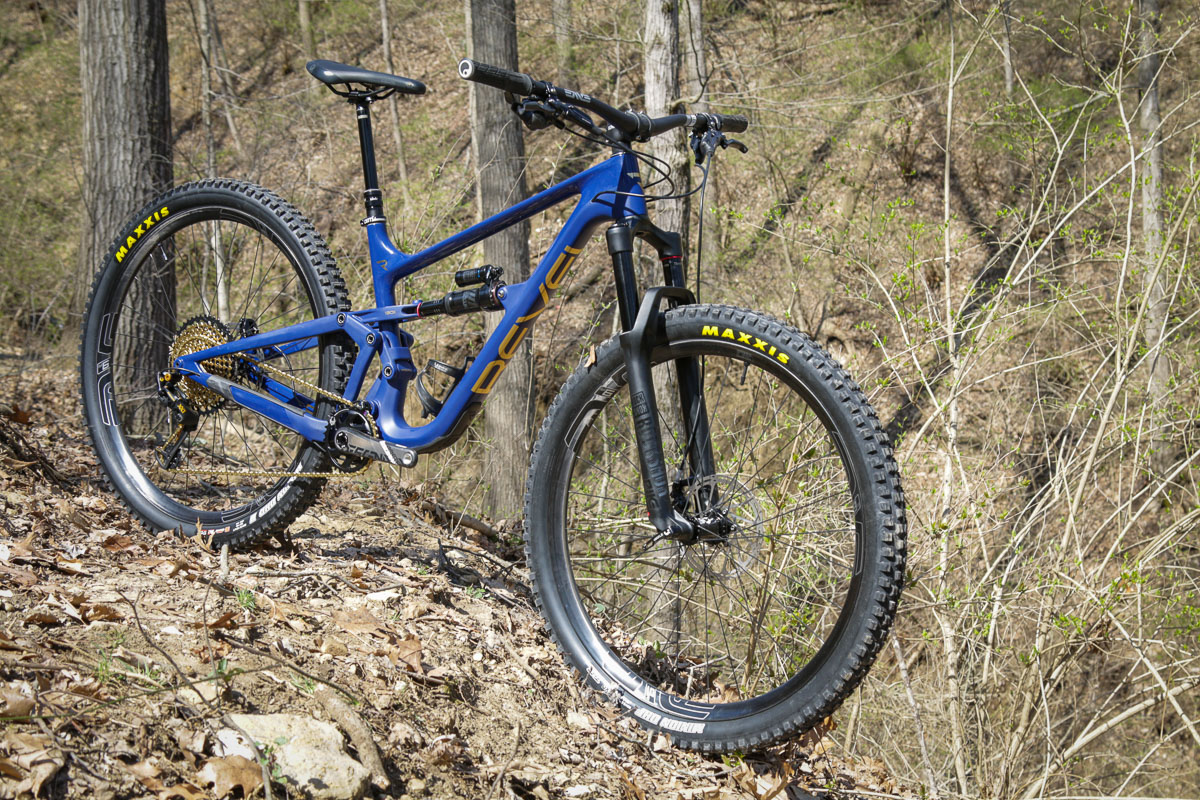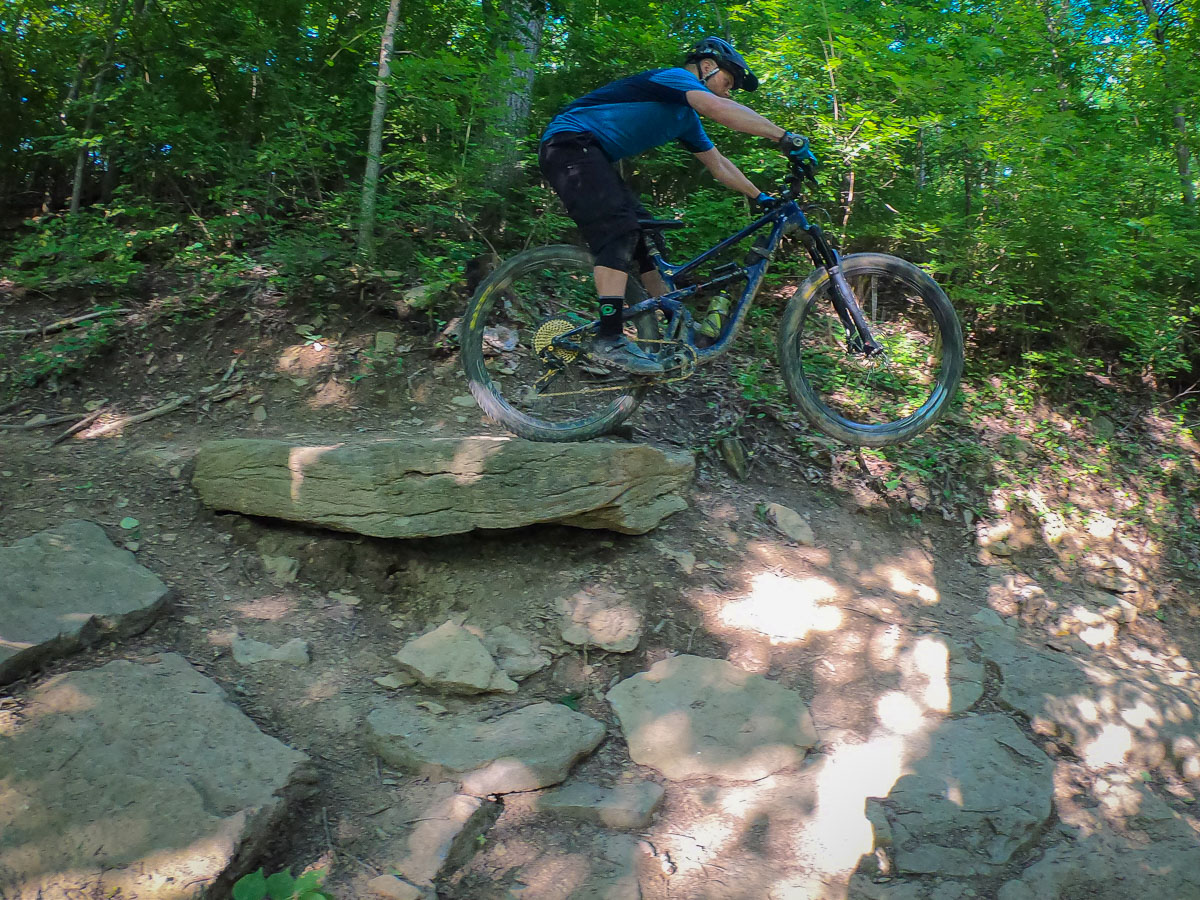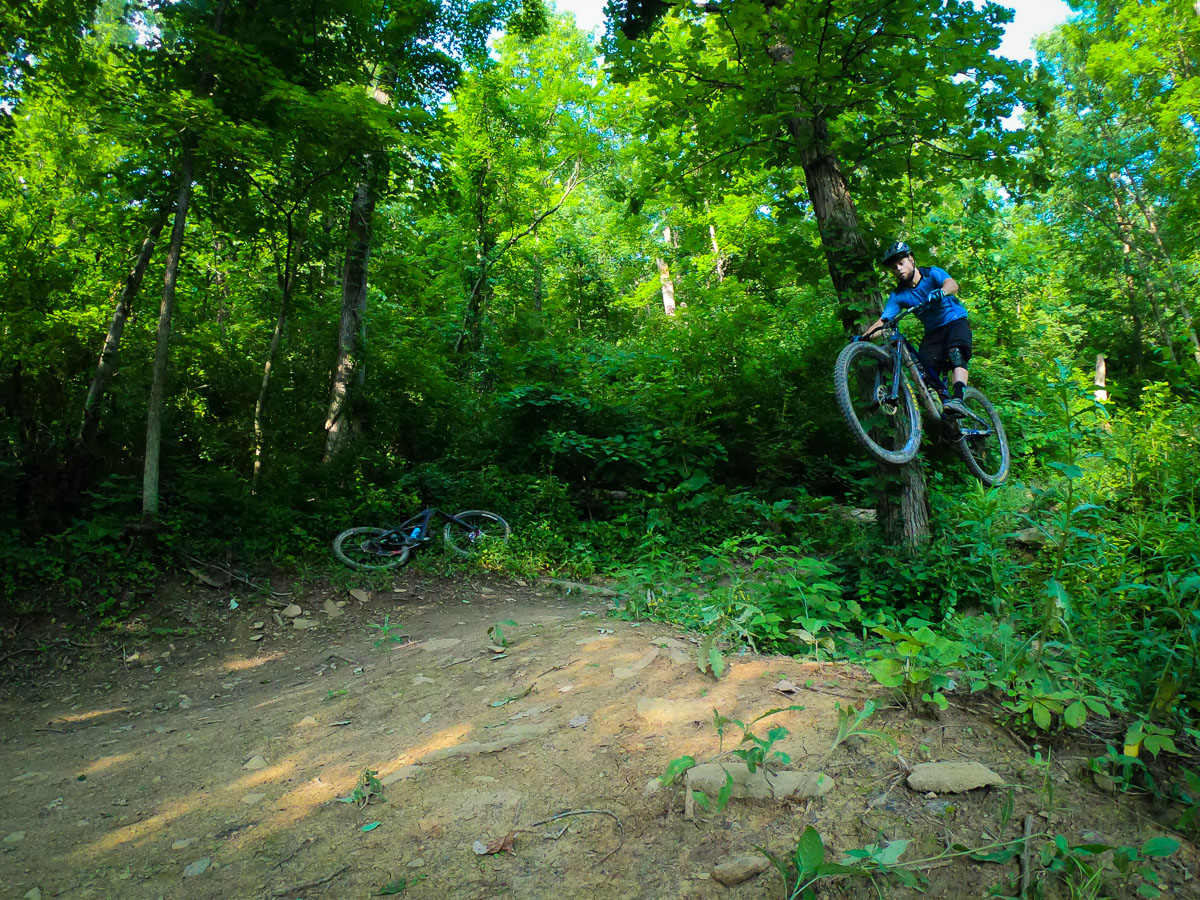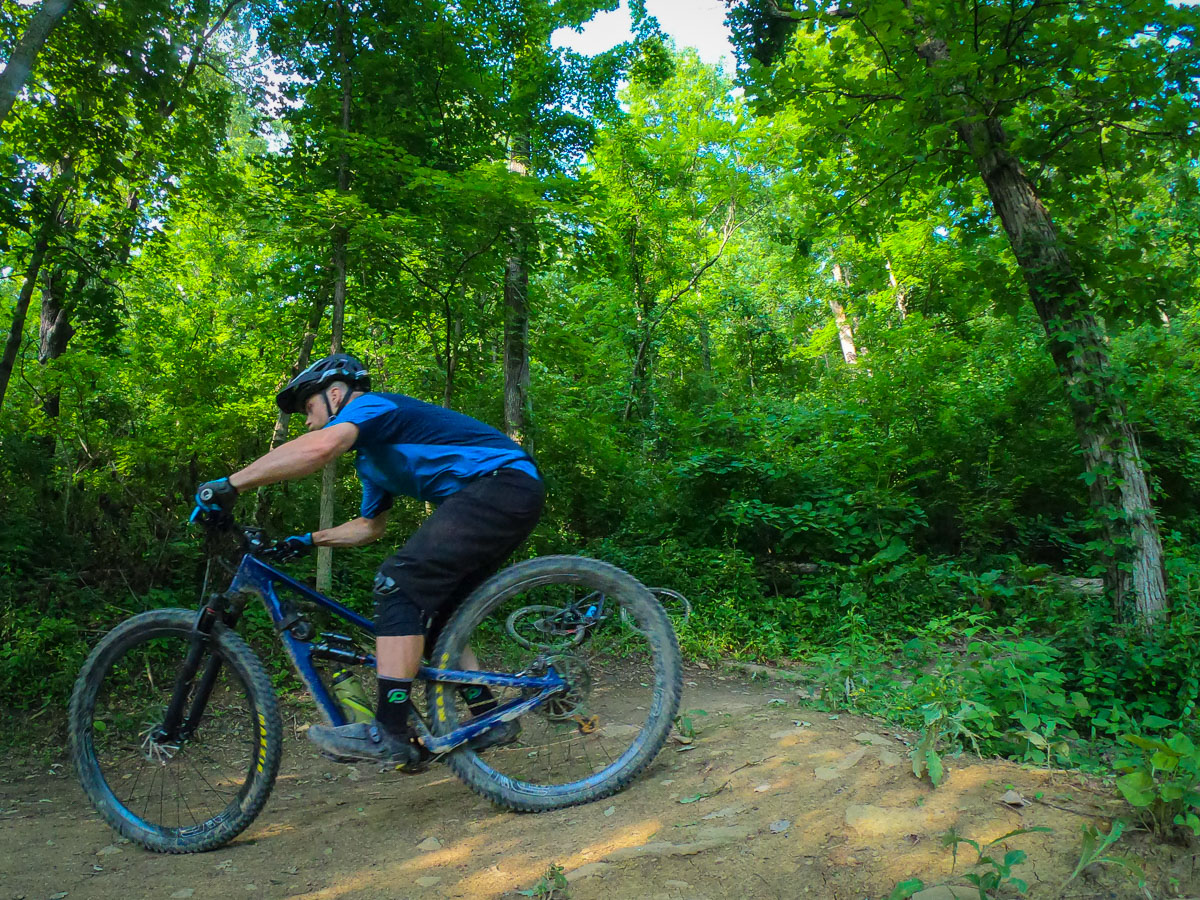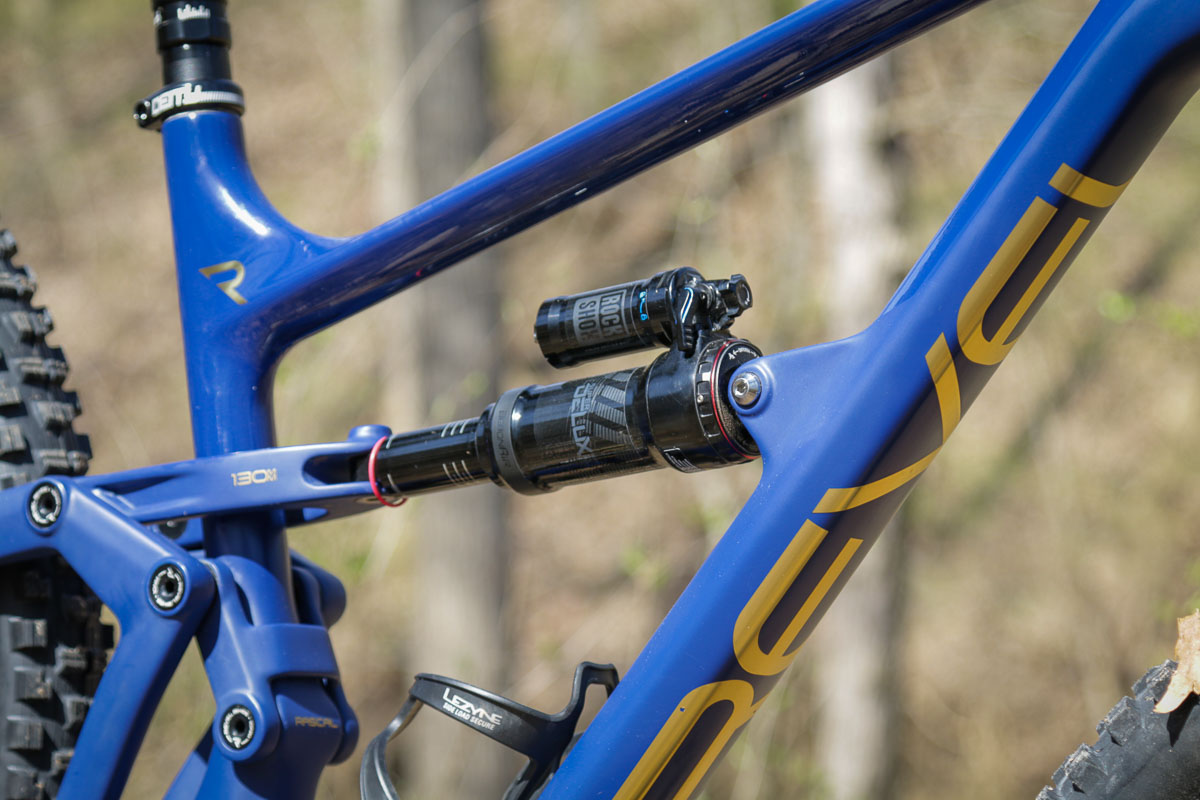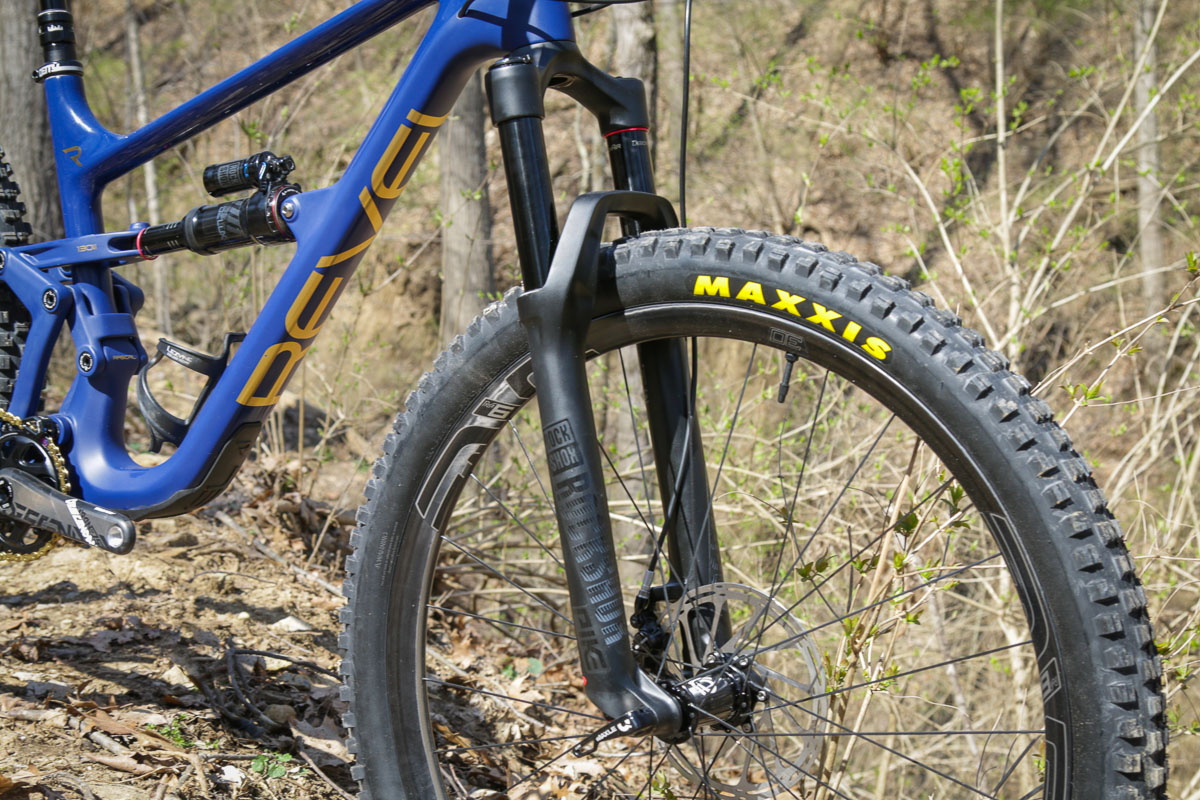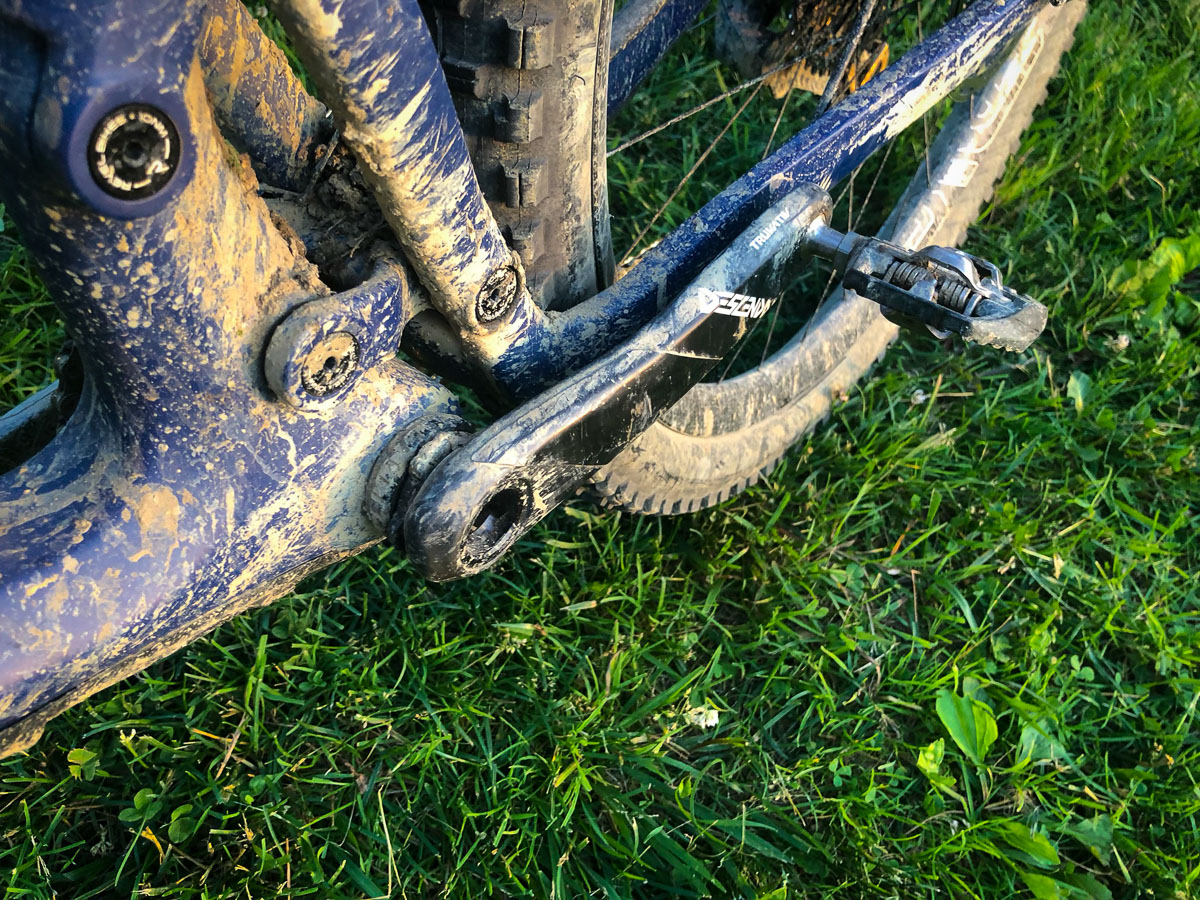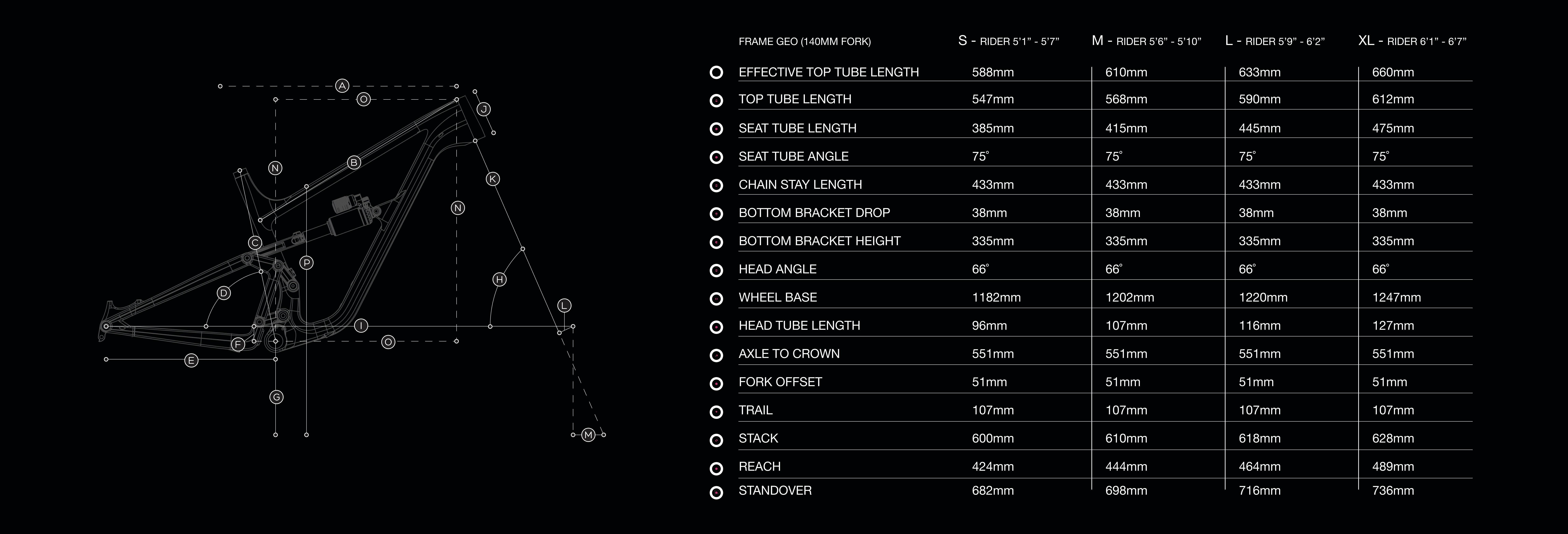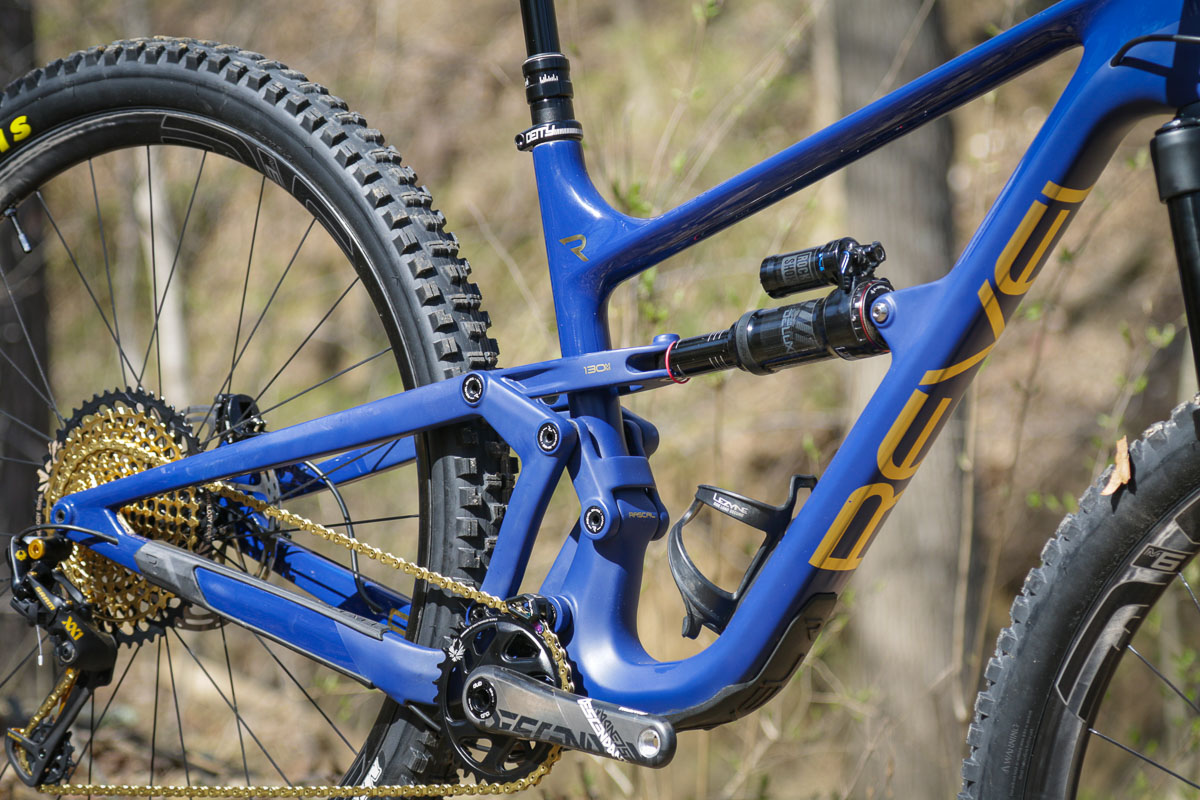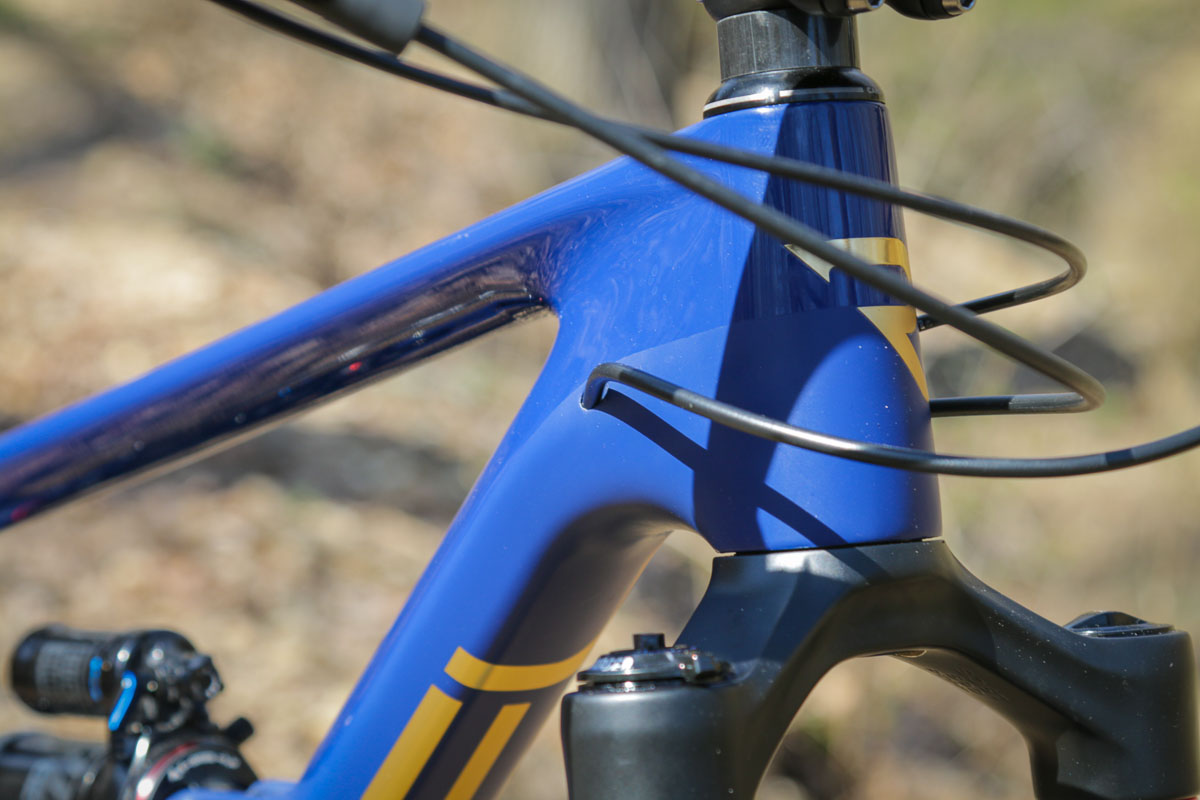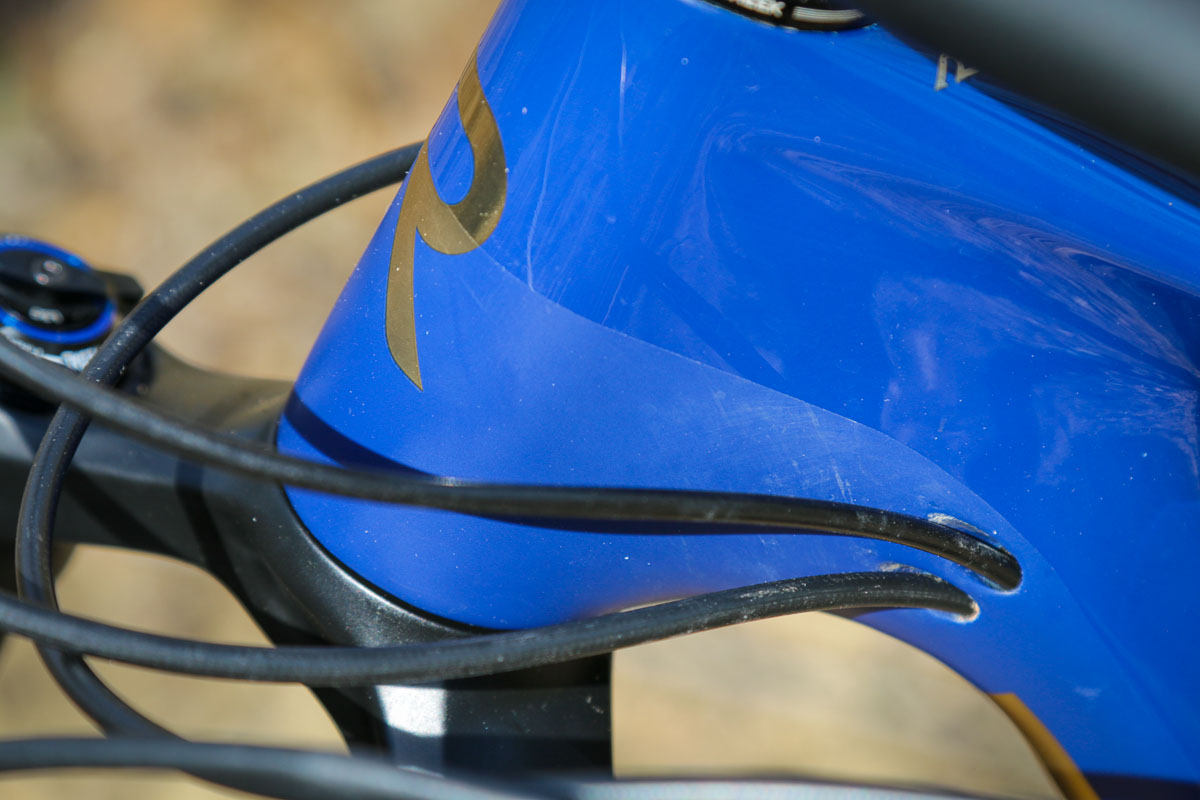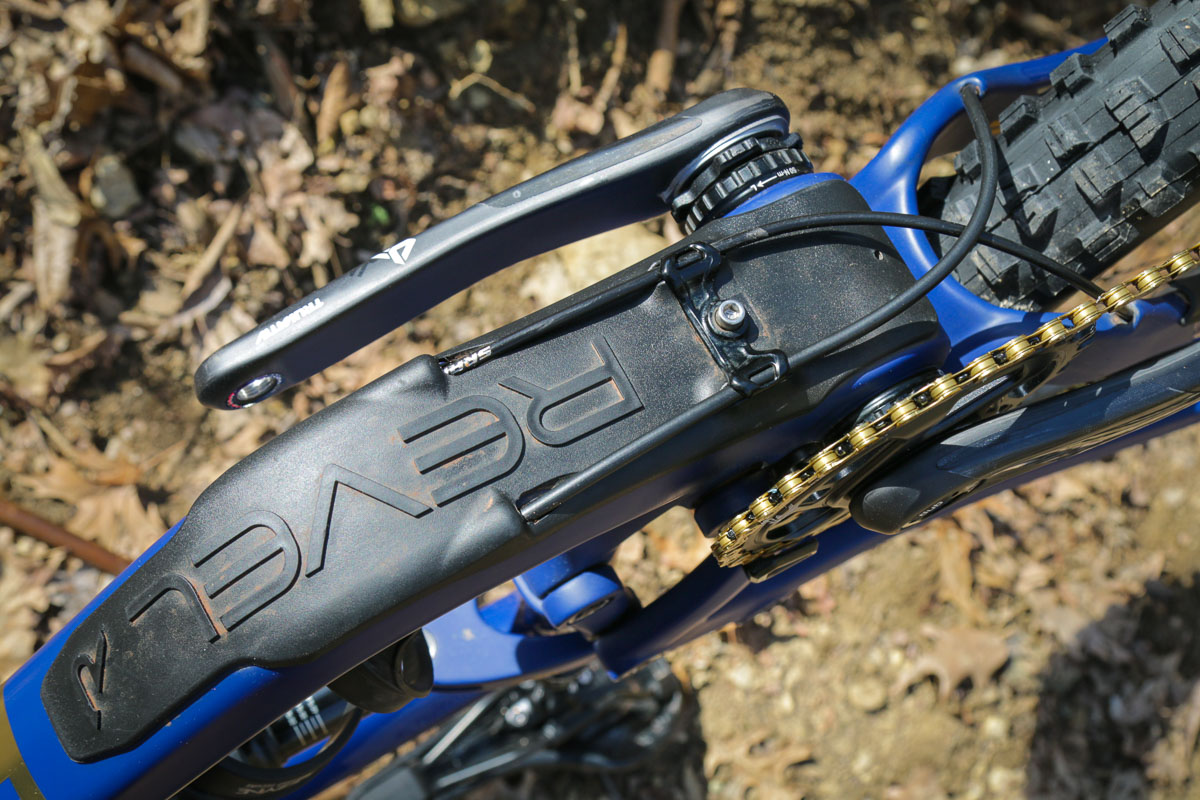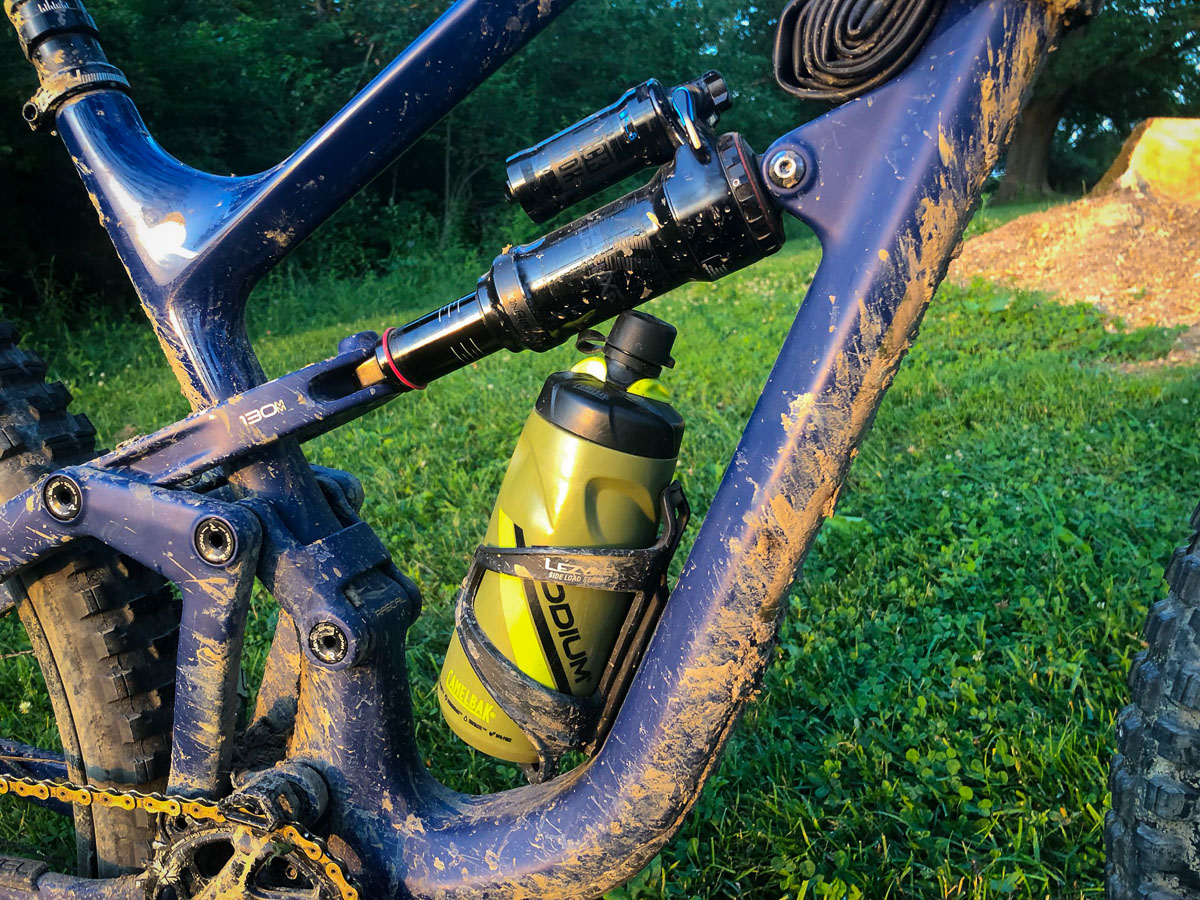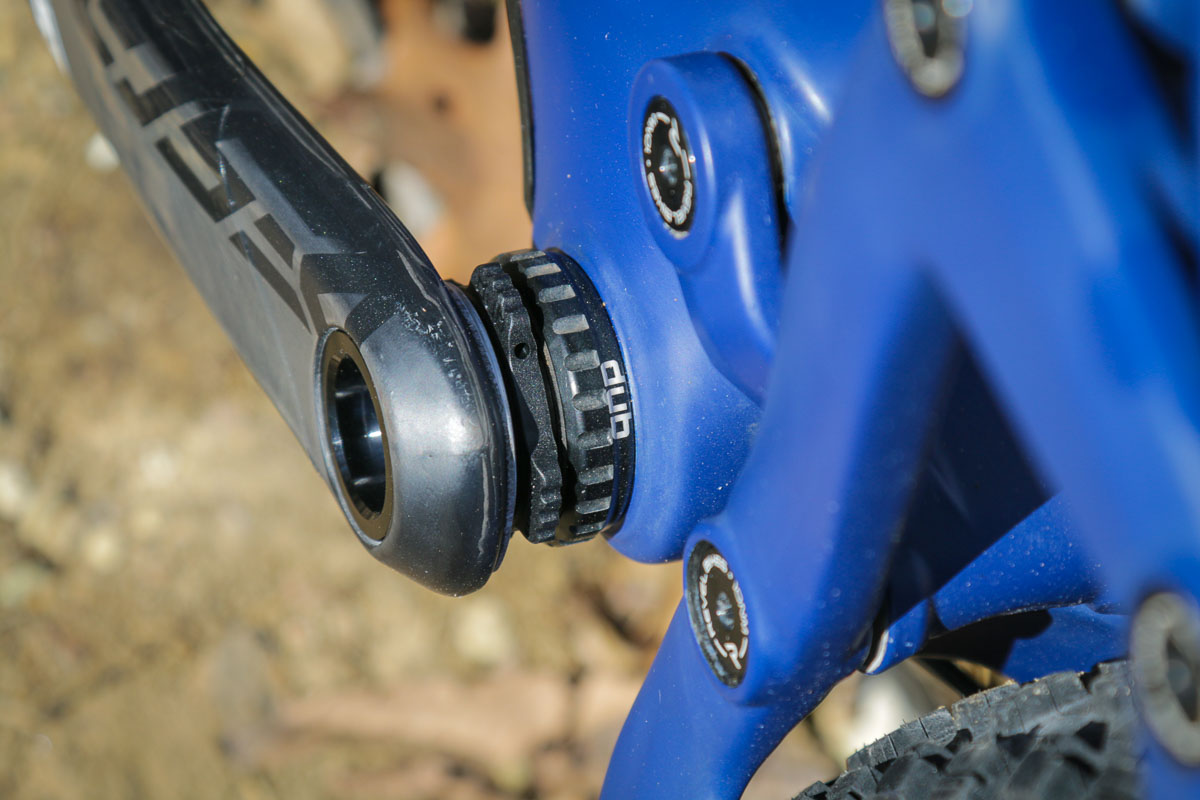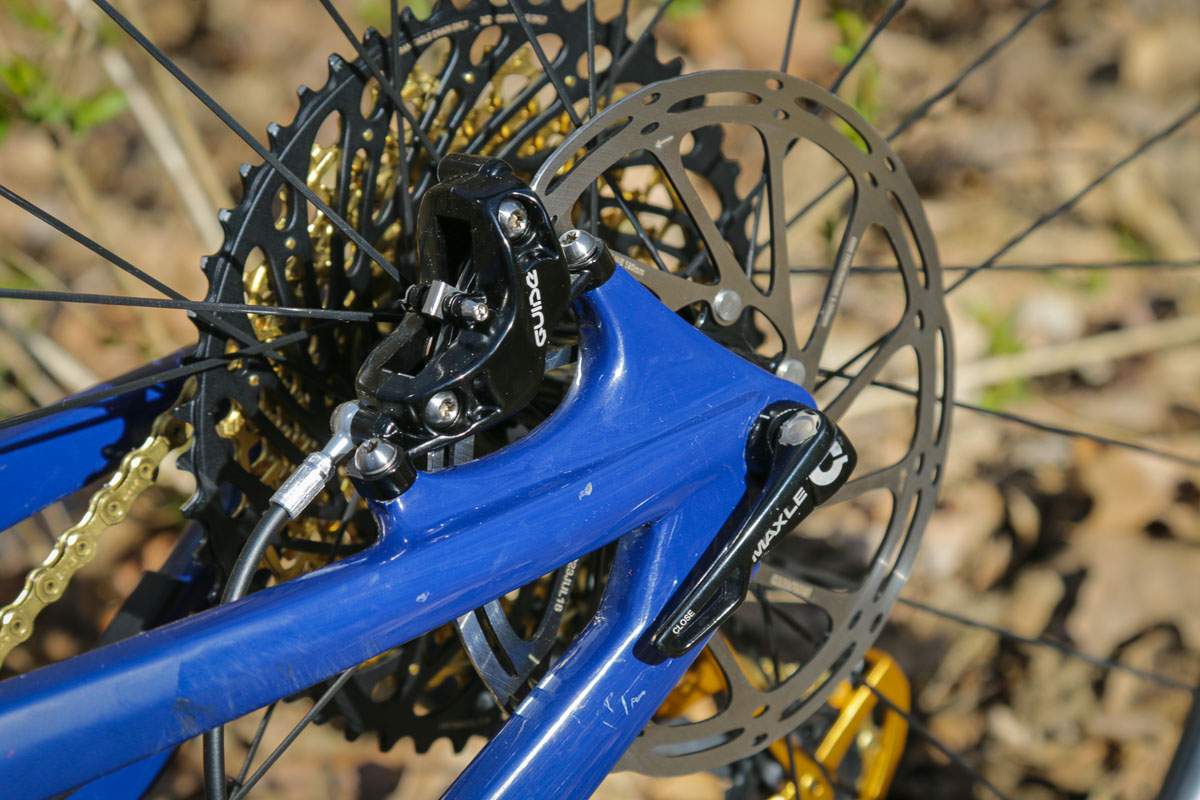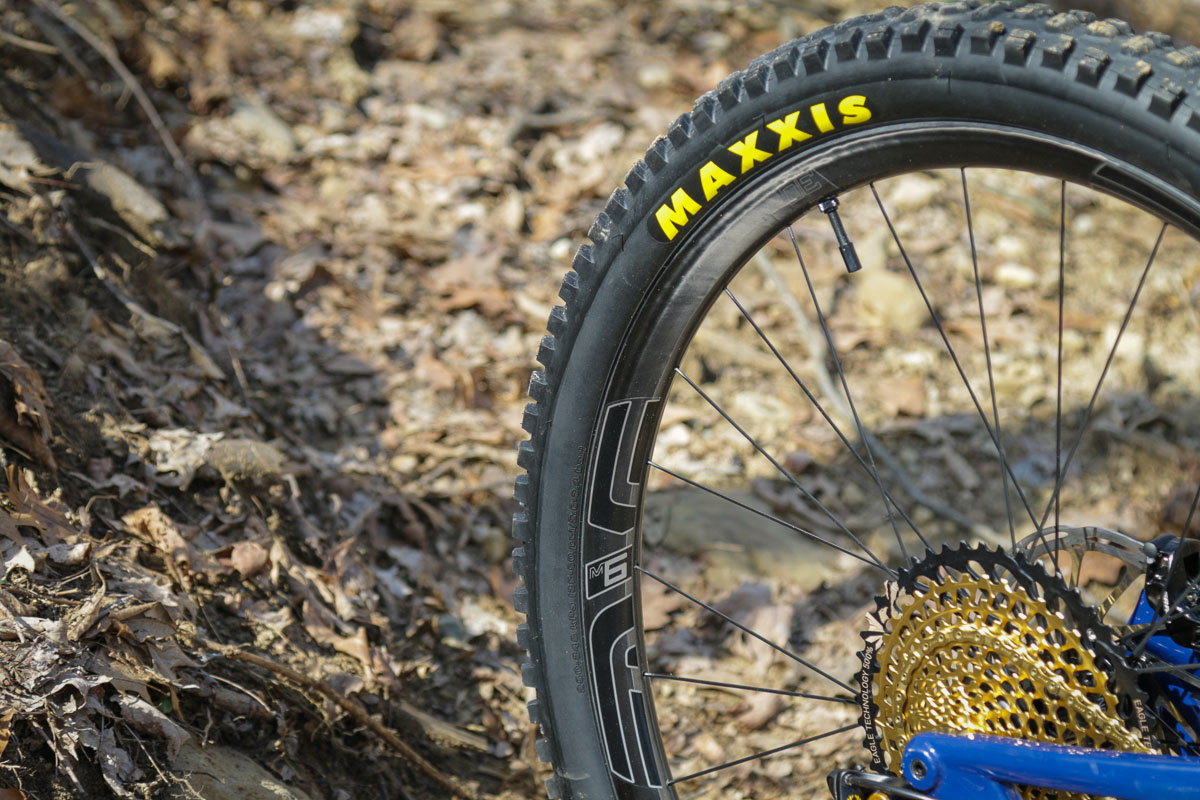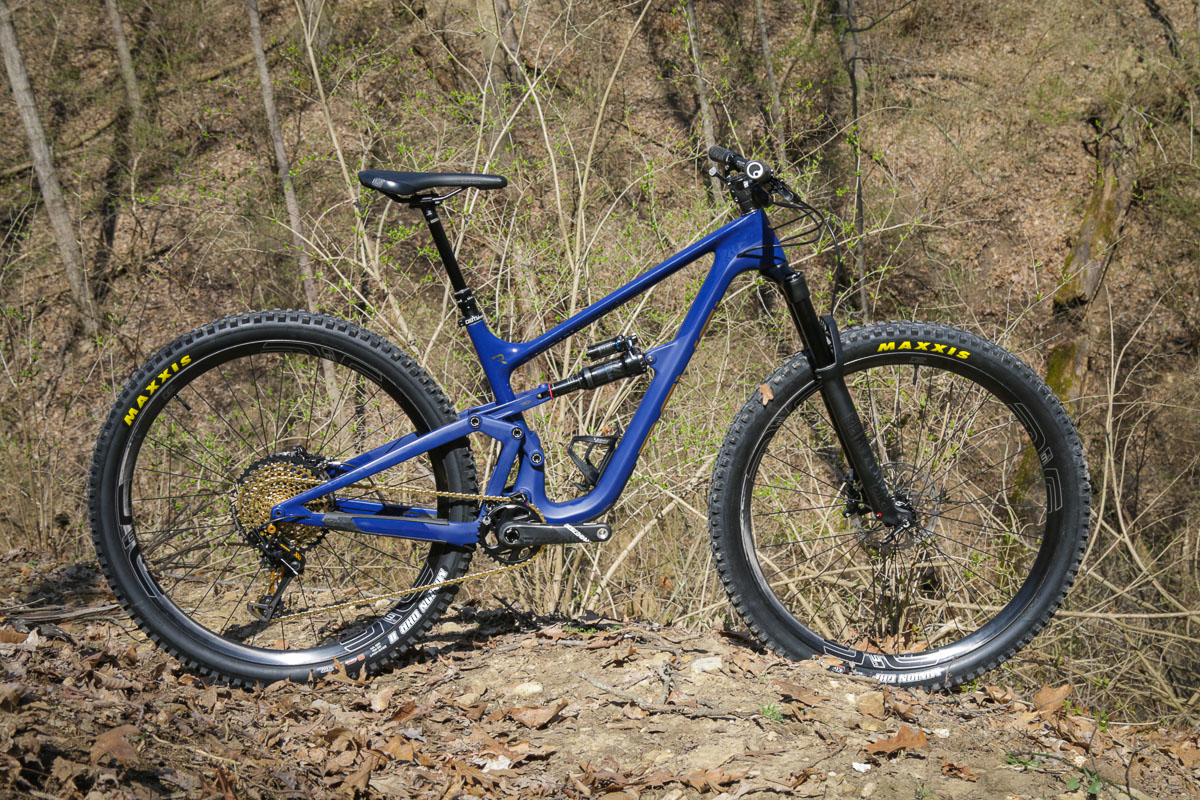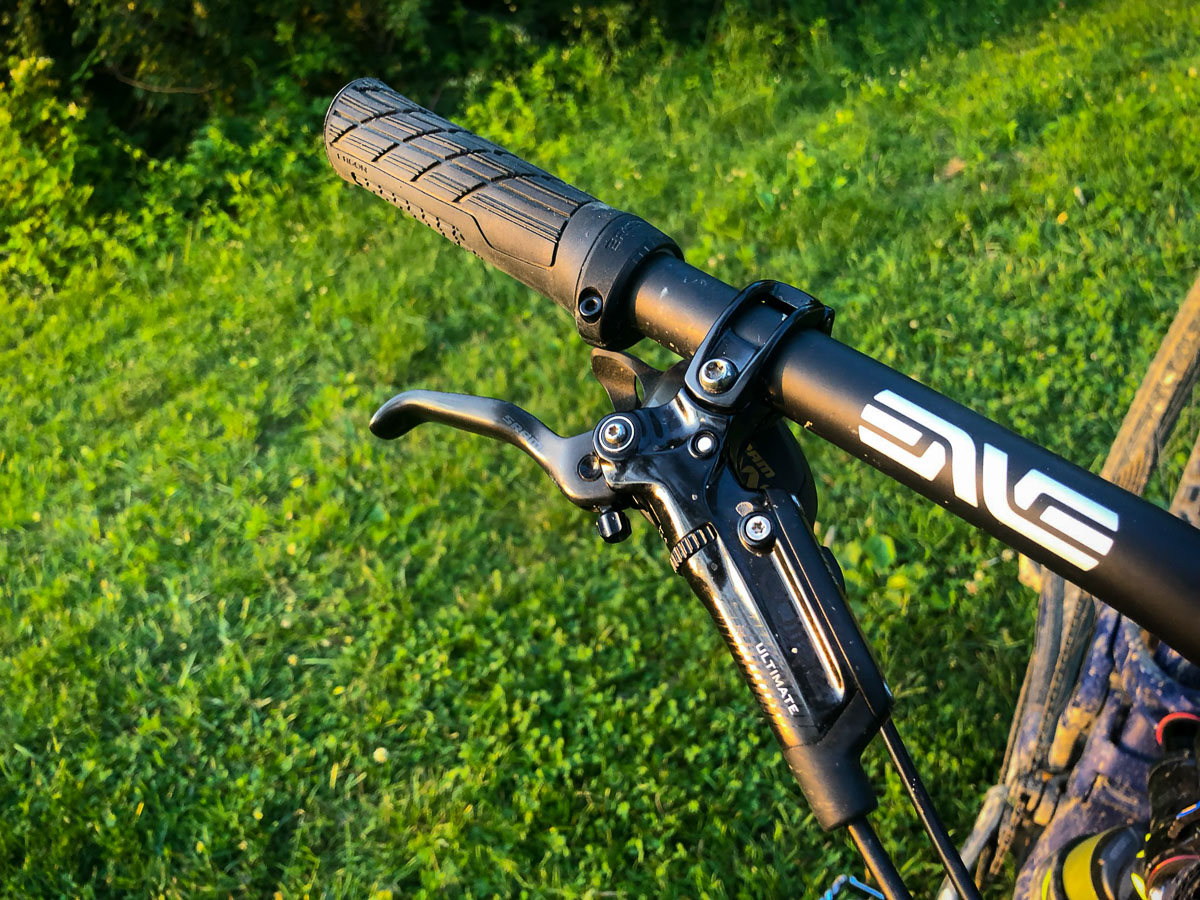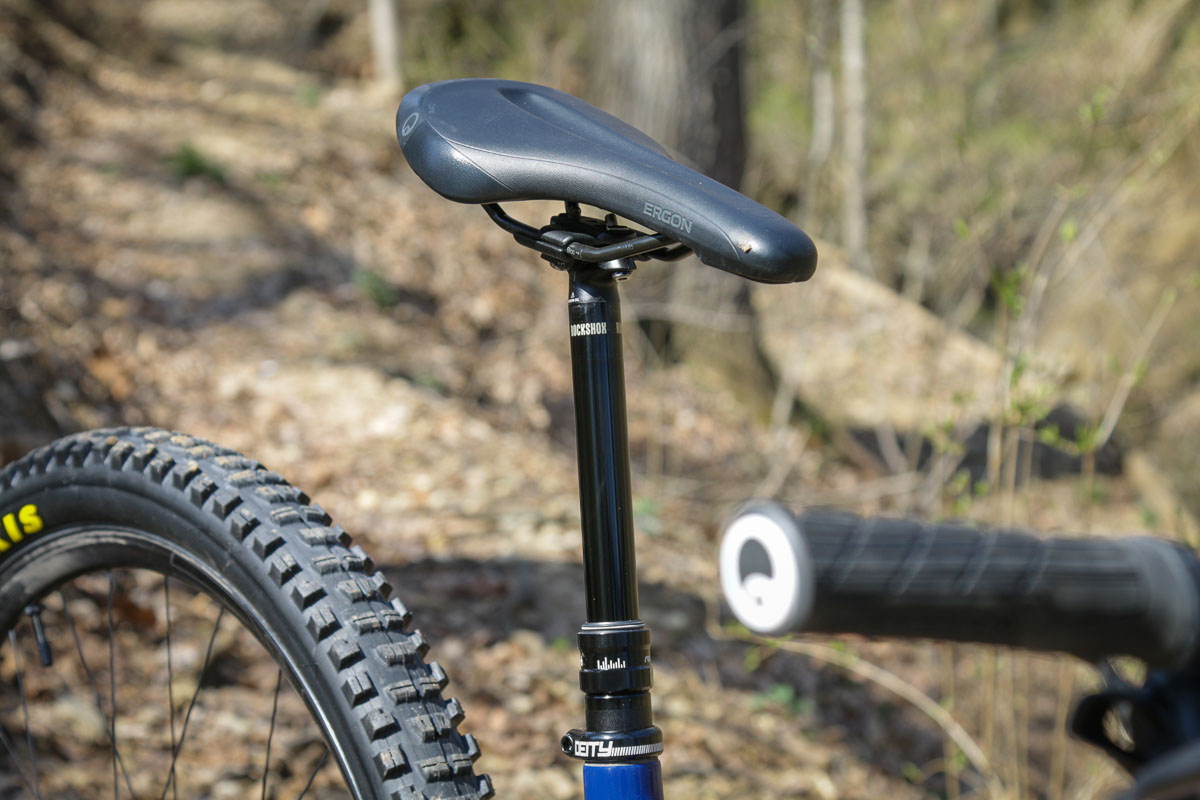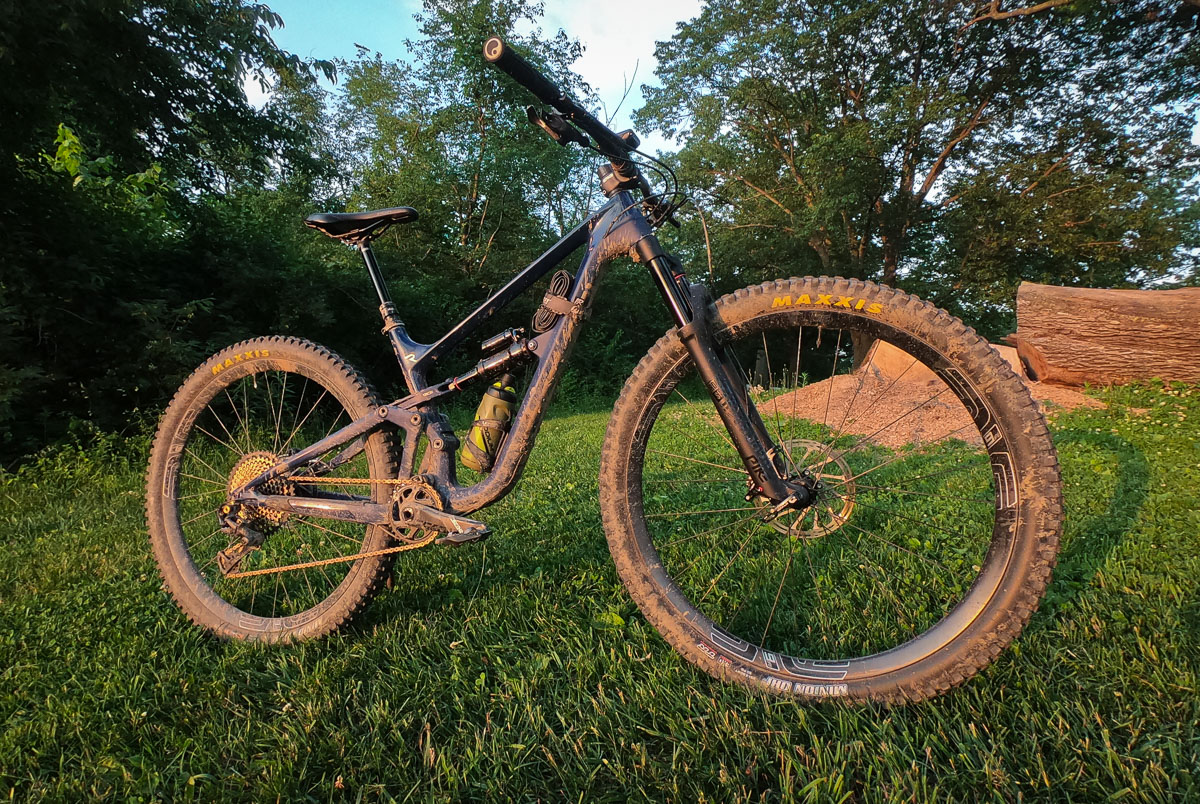Of all the mountain bikes that I knew would be released this year, the Revel Rascal was one that I was very excited about. As founder Adam Miller put it, creating Revel Bikes was always a long term goal – but the cost and timeline of creating carbon full suspension bikes meant he had to start small to first make it happen. I’ve appreciated Adam Miller’s bikes since he introduced himself along with the original Borealis Yampa carbon fat bike.
From there, he and his team went on to create Why Cycles which focused on rigid titanium frames. But in the background, they were feverishly working on an all new brand. One that would finally offer the capable full suspension mountain bikes that Adam and his friends want to ride. Over the years though, I’ve found that excitement over a new bike can be a dangerous thing as expectations don’t always mesh with reality. Fortunately, in this case, the Rascal exceeded my expectations in almost every way.
Launching with just two models, Revel currently offers the Rail with 165/170mm travel and 27.5″ wheels, and the Rascal with 130/140mm travel and 29″ wheels. At this point, I’m pretty much 29er all the time for XC/trail/enduro bikes on my home trails, so I naturally gravitated towards the Rascal. Going into the review, I figured that the shorter 130mm travel rear suspension would make this more of an aggressive trail bike at the most. What I found though, is that the Rascal punches well above its weight when it comes to big hit performance.
That’s less surprising when you consider that this is the first go at full suspension for Adam’s team – but not the team behind the suspension. Licensing the Canfield Balance Formula suspension design from the Canfield Brothers, the suspension design was already trail proven. The Revel team just had to figure out how to package it into their carbon frames and maintain the same performance.
Between the bike’s geometry and the suspension design, the Rascal exudes confidence. So much so, that it tempted me to finally clear a big (to me) gap on my home trails that I’ve been avoiding for a while now. I’ve always known I have what it takes to clear it, but for whatever reason I always passed on it. But on my second ride on the Rascal, I was feeling so confident that I decided then and there that I was going to nail the gap. So I rode up the hill, took a deep breath, and sent it…
That led to the most impressive trait of the Rascal and the CBF suspension – once properly set up, it has the ability to nearly erase any awkward landings. The first go, I thought I had cleared the landing of the gap, but when I walked back up the hill there was a massive tire mark right on the vertical face of the transition. I had completely cased the landing, but the suspension absorbed the hit so well I literally had no idea. I’ve ridden plenty of bikes that a similar landing would have easily bucked you over the bars, so for a 130mm travel bike to be so forgiving upon botched landing it was extremely impressive.
The excellent end stroke control isn’t just limited to sketchy landings though. I tend to run my suspension fairly soft and in order for me to get the suspension performance where I liked it, the Rascal required a hefty 30% sag or more. But even at those numbers, the suspension never harshly bottomed out no matter how rough the landing.
To me it seems like the suspension is definitely tailored towards the bigger hit end of the spectrum though as even at 30% sag, the climbing performance isn’t quite as good as some other designs. Mostly, it felt to me that when you’re standing on the pedals, the suspension stiffens up a bit and isn’t as supple over small, square edged hits while climbing. That isn’t to say that it doesn’t climb well – the suspension is very efficient when the trail points up. Only, it’s not quite as forgiving to trail chatter when climbing that might result in spinning the rear tire after bouncing off an object and throwing you off the line. This is a small trade off though when you consider how well the suspension handles mid to big hit performance.
Out back, all of those suspension inputs were channeled through a RockShox Super Deluxe RCT rear shock – though a Fox Float DPX2 Factory is also an option. The RockShox Pike Ultimate RCT3 in 140mm travel was certainly up to the task at the front of the bike. I almost never used the compression adjust levers on either the fork or the shock but I guess for long road sections to link up trails they could be useful. As for the rear suspension adjustment, I found that almost exactly your body weight is a good place to start and adjust from there.
Geometry
For Revel’s first go at a full suspension 29er, they nailed the geometry. At 5’8″ with a 690mm saddle to BB measurement, I was on a medium which has a 444mm reach – plenty long without being too long. I also got along well with the 75° seat tube which I’ve come to really appreciate for climbing. A 66° head tube angle with a 51mm offset fork seemed to work well up front, and the BB is low enough to provide a nice, stable feeling without smashing on every rock throughout the trail. As mentioned, I felt immediately comfortable on this bike which was apparent in the on-trail performance.
Frame Details
When it comes to the frame itself, there’s a lot to like about the Rascal. The carbon frame features guided internal cable routing which exits in front of the bottom bracket on the downtube. From there it’s clamped into a cable guide on the molded downtube protector where it crosses and then enters into the respective chainstay. Everything is very tidy, quiet, and doesn’t interfere with accessories.
The medium will fit a bottle inside the front triangle, but just barely. Only my smallest Camelbak Podium bottles would fit and even then you’ll need a side mount cage. But it fits! For most of my short to mid length rides, this bottle is plenty. And even longer rides where I can refill mid ride it works. It would be nice to have more room for a bottle, but at least there’s an option available. 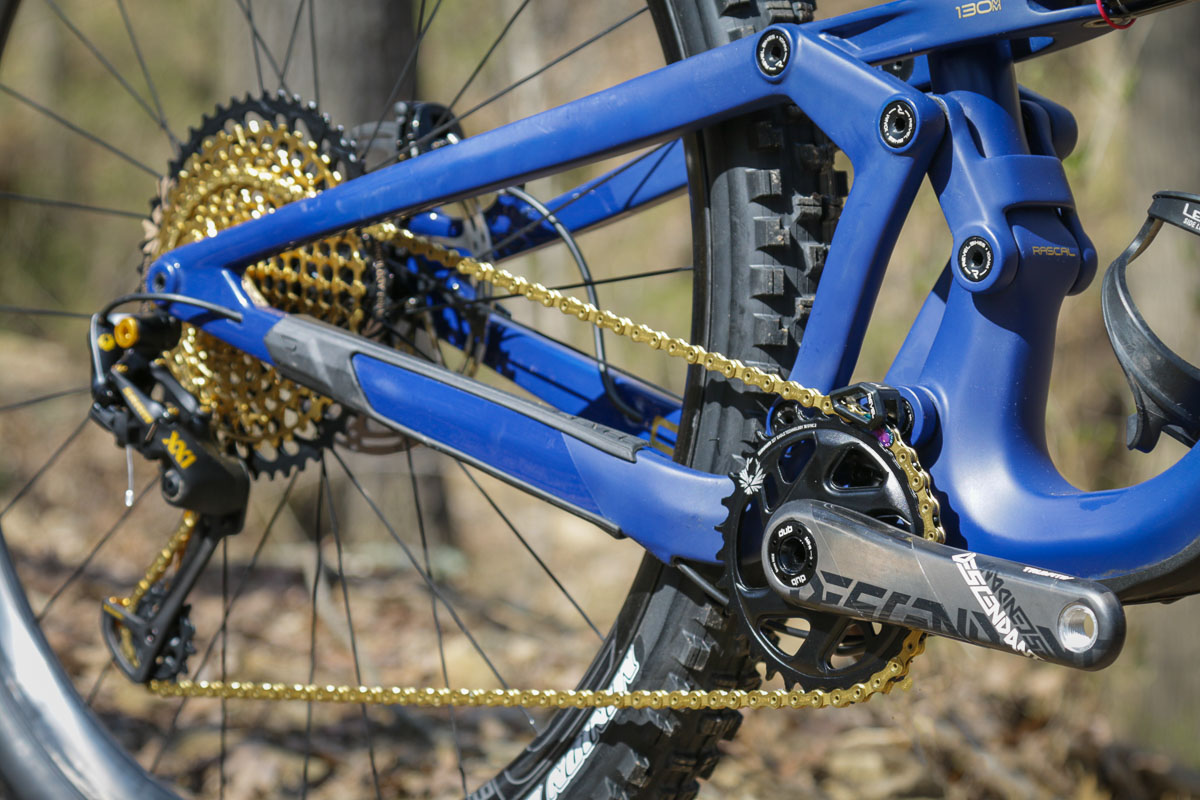
Obviously designed for 1x only, the frame features an integrated upper chain guide. There’s no ISCG tabs for mounting a bash guard, but since the frame uses a BSA threaded bottom bracket, you should be able to figure out something BB mounted if it’s a must.
You’ll also find a molded chainstay protector which seems to work well and keeps things quiet. The back end of the Rascal uses a 148 x 12mm thru axle and 180mm post mount brakes.
Tire clearance is limited to 2.5″, though technically it’s 2.4″ if you measure to the CEN standard. This test bike was set up with Maxxis Minion DHF/DHR II in a 29 x 2.5/2.4″ combo with 120 tpi WT casings. I’ve come to expect great things from most Maxxis tires and the Minions are a staple – when it comes to all around grip, they rarely disappoint.
 Build
Build
This review bike was sent out with the top level XX1 Eagle ENVE Kit ($8699), which has since been superseded by the XX1 Eagle AXS ENVE Kit at $9999. However, the mechanical build will still be an option if you prefer not having to charge your bike.
Overall, the components performed as expected with the XX1 Eagle drivetrain offering nearly flawless performance. The ENVE M630 carbon wheels with I9 hubs wouldn’t be my first choice (that would be the I9 EN310 carbon wheels that are also an option, though in a 24h build and with gold spokes like this), but they were still excellent – plenty stiff (still maybe a bit too stiff for my liking) and held up well for the duration of the review. The ENVE carbon bar and stem were also quite good with a 780mm wide bar and 35mm long stem. My build included a 150mm RockShox Reverb Stealth dropper with the 1x hydraulic lever which worked well save for the stiction of the main seal. We’ve had a very wet and muddy spring, so things were constantly covered in a film of crud which likely had something to do with this.
Touch points include some of my favorites with an Ergon SMA3 saddle and GE1 grips. The build was dialed – which is exactly what you would expect from a bike at this price point. But Revel also allows you to custom spec your build with choices for suspension, wheels, dropper, tires, and more. All in, the medium with the parts shown above weighed in right at 29lbs.
Final Thoughts
One of the biggest takeaways from my time on the Revel Rascal is that this does not feel like the freshman effort of a fledgling bike company. Instead, the Rascal rides like the thoroughly modern offering of an established player – one that is sure to win over fans of bikes that don’t let their suspension numbers dictate the size of the jumps. Packing big hit performance in a relatively small package, the Rascal isn’t an ultra light trail bike. But if you like to take your time on the climbs, blitz the descents, and want something smaller than a full blown enduro bike that still offers big bike confidence, the Rascal is absolutely worth a look.
